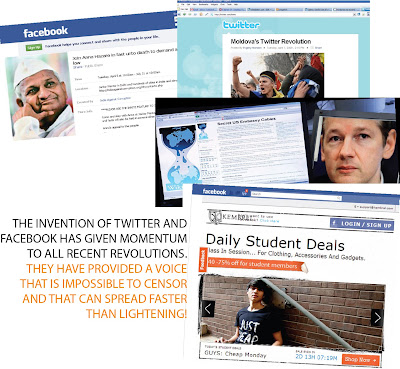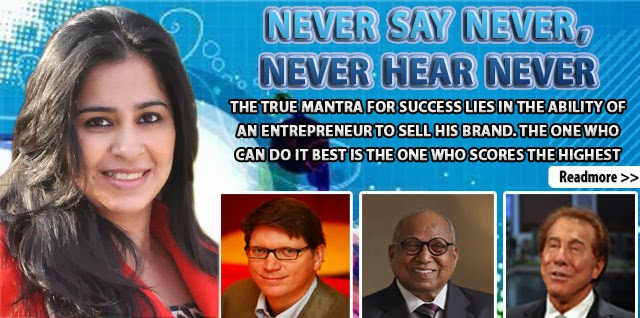Who needs billionaires?
In the global village, national pride is no longer decided by mere military superiority, but by the combined might of soft power, including cultural influence and the ability of a nation to spawn “global homegrown brands...”
“Google is history as far as I’m concerned.” These were the words of a former English schoolteacher Jack Ma. In 1999, Jack Ma launched Alibaba.com from an apartment in Hangzhou, China. Essentially Alibaba.com serves as an e-commerce aggregator, bringing together buyers and sellers. Forbes named it the “Best of the Web” for five years running. Sitting in the manufacturing-hub-of-the-world i.e. China, the company, with its strong understanding of Chinese culture and business practices, is ready to take on biggies like eBay, et al and is sure to emerge as a leader in China – the world’s largest online market.
Answer the following questions – who is the world’s largest mobile phone operator? Who is the world’s biggest maker of air conditioners? Who is the top selling brand of compact refrigerators in USA? Who is the No.2 refrigerator manufacturer in the world?
China Mobile with 200 million customers is the largest mobile phone operator. Gree Electric Appliances is the largest maker of air conditioners. Haier is the top selling compact refrigerator brand in USA. Haier again is the No.2 refrigerator manufacturer in the world – just behind Whirlpool. Lenovo is the most popular PC brand in China and is fast becoming a strong global player. All these Chinese brands are shaking up the world of marketing and branding.
Now consider these two individuals Zong & Tracy. Zong Qinghou spent his early life labouring in the rice paddies. Today, the 59-year-old is the founder of Wahaha – a beverage group that had profits of $196 million in 2003. In rural China, Wahaha’s Future Cola is the market leader, defeating international favourites like Coke and Pepsi.
Tracy Zang, a 31-year-old advertising agency owner in Beijing, is planning to buy an Aigo camera, after replacing her Sony Cyber-shot. A walk inside her beautiful suburban house shows that her choice of brands is mostly Chinese. Her TV is from TCL, her refrigerators (two of them) from Haier, as also her washing machines, heaters, et al. When everything is made in China, she prefers her own country’s brands to foreign brands.
Within China, one of the fastest developing markets, both Chinese brands and Chinese consumers are growing at a fast pace – leaving behind their foreign counterparts – and increasing their loyalty towards domestic brands. According to Fortune magazine, in a survey done in 2005 by China Quality Promotion, domestic brands scored 11% points higher than their foreign rivals.
There was a time when right from Jennifer Aniston’s hairstyle in the television series ‘Friends’ to a western style of dressing with brands like Chanel & Armani, the Chinese wanted everything western, for it was considered better quality and more trendy. Today, a whole lot of them, especially the younger lot, are going back to their traditional Chinese hairstyles, their own Chinese designers and Chinese brands. The Beijing Auto Show used to be a place where not-so-technically-efficient Chinese cars used to be showcased. The scene has changed now. Exquisite high-end sedans, smart SUVs, convertibles, all made by Chinese manufacturers are drawing larger crowds – much more than the big foreign car brands. Five years ago, vehicles from the United States and Europe dominated Chinese roads. Not any more. Five years ago, Chinese automakers thought that copying western designs was the route to success. No more. In a market dominated by Buicks, Volkswagens, and Toyotas, it was the Chinese brand ‘Chery’, which sold the maximum numbers of cars in China last year.
It happened a long time ago
China is fast becoming an incubator of powerful global brands – all home bred and home grown. They are changing the rules; rather, they are creating their own rules and are all set to dominate the world market. Come to think of it, till a few years back, the entrepreneurs who started these brands had no clue about things like ‘positioning’, ‘branding’, ‘segmentation’ and all other marketing jargons you can think of. They were not even MBAs – some were school teachers, some farmers – but they all were entrepreneurs. Daring, heroic entrepreneurs, who fearlessly dared to challenge the big guys and managed to topple them down too.
They may still not be clear with a lot of fundas, but they are sure they’ll learn – and learn fast. They had no clue about how powerful advertising could be for building brands, but now they are advertising big time. With $24 billion as advertising spend in the year 2003, China is fast becoming the world’s biggest ad market. If Adidas had a punch line ‘Impossible is nothing’, then Li Ning, China’s biggest manufacturer of sports goods and apparel, came out with one that said, ‘Anything is possible’. A lame copy, you may say, but millions of Chinese know it and love it. They (the Chinese) are learning fast. So Lenovo has become the first official ‘top’ sponsor of Olympics 2008, standing shoulder-to-shoulder with the likes of Coca Cola and Panasonic.
There was a nation, years ago, which had been turned to ashes and defeated in World War II. Its pride was shattered. Then came a brand that almost single-handedly restored the nation back to glory. The country was Japan – the brand Sony. Akio Morita brought back the pride of ‘Made in Japan’. When Sony opened its first store on Fifth Avenue in 1962, it was the first time the Japanese flag had flown in the city since the war – what a day it would have been! Sony made the world look up to Japan.
Brands are important in today’s world. They shape a nation’s image. Thanks to globalisation, today nations compete with each other in perception, as well as reality. And brands help build mass perception about the countries they come from. From being perceived as shoddy and cheap, Akio Morita with his amazing Sony products changed the image of Japanese products to best- quality-lasts-for-a-lifetime.
In much the same way, Hyundai, Daewoo, Samsung and LG have changed the way people look at Korea. Similarly, Nokia has changed the image of Brand Finland. Today, Chinese homegrown brands are changing the way people are looking at China. They are restoring the pride of the ‘Made in China’ label.
The power of homegrown brands
Today, the success story of a brand can be summed up in a single line “Made at home… sold in America.” Simply put, if we nurture our own homegrown brands and make them strong enough to compete with the best internationally, then we win as a nation on the global scorecard. Strong homegrown brands have the power to stand their ground against global giants. Jollibee is the pride of Philippines. It has turned the world’s number one QSR, McDonald’s, into a small player, by commanding a 69% market share. Japanese brand, ‘Hello Kitty’, has today become iconic. ‘Geely’, the Chinese car brand, is all set to capture back the Chinese market (one of the fastest growing car markets in the world) from foreign car makers. ‘Uniqlo’ is today Japan’s number one clothing brand and has left behind big global names like GAP.
As Management Guru & economist Prof. Arindam Chaudhari says, “The top list of billionaires features the names of five Indians. However, the list of top ten brands of the world does not feature a single Indian brand.” Today, brands and their creators have the power to change the world. Look how Google, iPhone, Xerox, Kleenex, et al have influenced and changed the way we live and work. A nation’s pride is its brands. Today, nations fight not in battlefields, but in the market place. And undoubtedly, those are strong brands and not rich individuals that help in winning this war. Those are strong brands that are a nation’s identity and give it global entrepreneurs, with dedication and a fighting spirit. So, who needs billionaires?


Comments
Post a Comment